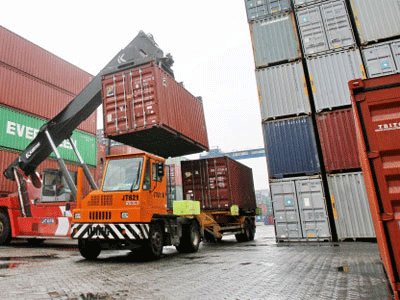INSUBCONTINENT EXCLUSIVE:
Authors: JordanMUMBAI: The rupee’s whipsaw against the US dollar has kept traders on the edge for the past two years, but the local
currency’s movement relative to that of its giant northern neighbour is giving the policy mandarins in New Delhi some cause to cheer.
In
the past one year, the rupee has lost about 13 per cent against the Chinese Yuan, signalling better days for Indian exporters.
“While
competitiveness in exports depends on many factors, the exchange rate is one of them,” said Saugata Bhattacharya, chief economist at Axis
Bank.
“This is particularly true for exports to a country like China, which has so many other advantages
This is an opportunity to explore the export markets in China.”
In February, exports to China rose 12.03 per cent to Rs 7,650 crore, while
imports increased 26.35 per cent to Rs 40,162 crore, show the latest government data.
“The currency impact if sustained over a longer term
period would provide an advantage to Indian exporters to China,” said Madan Sabnavis, chief economist, Care Ratings.
“We need to see how
the rupee depreciates against the dollar compared with other competing currencies
Falling against the yuan on its own may not be effective.”
“The rupee has to depreciate more than the currencies of other countries that
supply goods to China,” he said.
The rupee lost 3.9 per cent to the greenback while the Chinese currency gained about 8 per cent against
the dollar over the past one year, show data from Bloomberg.
China is India’s largest trading partner, with bilateral trades reaching
almost $72 billion in 2016-17, a surge of 88 per cent from $38 billion about nine years ago.
The Wuhan Summit between Prime Minister
Narendra Modi and President Xi Jinping broke “new ground” as they identified the guiding principles for bilateral ties and drew up a
blueprint for cooperation, the Chinese foreign ministry said on Wednesday.
India’s trade deficit with China more than trebled to $51
billion in 2016-17, from $16 billion in 2007-08.
Currency value is one of the factors driving exports, though the overall growth in the
importing country is also important.
“This said, as the rupee has depreciated against the yuan, typically exports should become more
competitive,” said Sabnavis.

